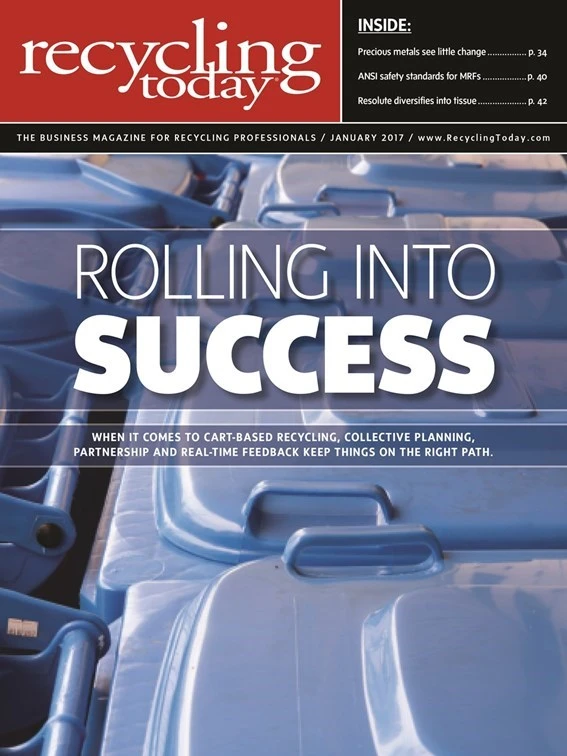
The Recycling Partnership and the U.S. Environmental Protection Agency (EPA) recently released the results of a study that examined the state of curbside recycling in the U.S. The resulting report, “The 2016 State of Curbside Report,” is available at http://bit.ly/2h9suop.
According to the report, no single factor contributes to the success of curbside recycling programs. This probably doesn’t come as a surprise to many recycling coordinators. However, one of the factors may be somewhat surprising, and that is that automatic servicing of single-family households, or programs where residents don’t need to opt in to recycling but are automatically provided a cart and included on a regularly scheduled collection route, can help to increase program success.
Of the communities surveyed that had recovery averages in excess of 400 pounds per household per year, 93 percent provide service to residents automatically. Opt-in systems, on the other hand, collect an average of 264 pounds per household per year. However, the study notes that opt-in programs “can be successful with additional policy provisions, such as making recycling service mandatory when opting into trash service, bundling garbage and recycling together with a cost structure that stays the same if recycling is refused or changing to an ‘opt-out’ method. Without those provisions, however, opt-in/subscription-style systems can create an undue burden on the average citizen of a community.”
The other factors The Recycling Partnership and EPA say most contribute to the success of the country’s recycling programs are single-stream collection using carts rather than bins and public engagement that influences recycling behavior.
Public action can tie in directly with automatic collection, according to the report, which states: “The most successful programs are seen when local governments are engaged in the recycling program and have triggered an ‘action’ to incentivize recycling.” Ways communities are doing so include creating a licensing agreement or franchise that combines garbage and recycling service or providing recycling service without requiring residents to sign up for it, according to the report.
Another important consideration is data tracking. The study recommends that communities collect and report the total number of households (single-family and multifamily); the number of households serviced by curbside collection; materials accepted in program; and a breakdown of annual tonnage by curbside, multifamily, commercial and drop-off programs. “Once that information is gathered, analysis of the types of investments needed in each region to improve program performance can be accomplished,” the report states.
With this additional insight, many recycling coordinators might be able to further hone their community recycling programs in the future to capture additional recyclables.

Explore the January 2017 Issue
Check out more from this issue and find your next story to read.
Latest from Recycling Today
- Phoenix Technologies closes Ohio rPET facility
- EPA selects 2 governments in Pennsylvania to receive recycling, waste grants
- NWRA Florida Chapter announces 2025 Legislative Champion Awards
- Goldman Sachs Research: Copper prices to decline in 2026
- Tomra opens London RVM showroom
- Ball Corp. makes European investment
- Harbor Logistics adds business development executive
- Emerald Packaging replaces more than 1M pounds of virgin plastic





